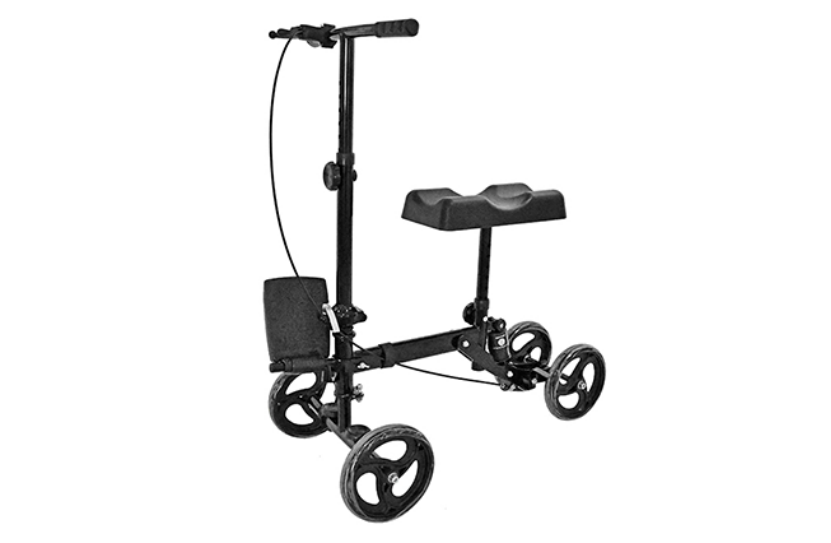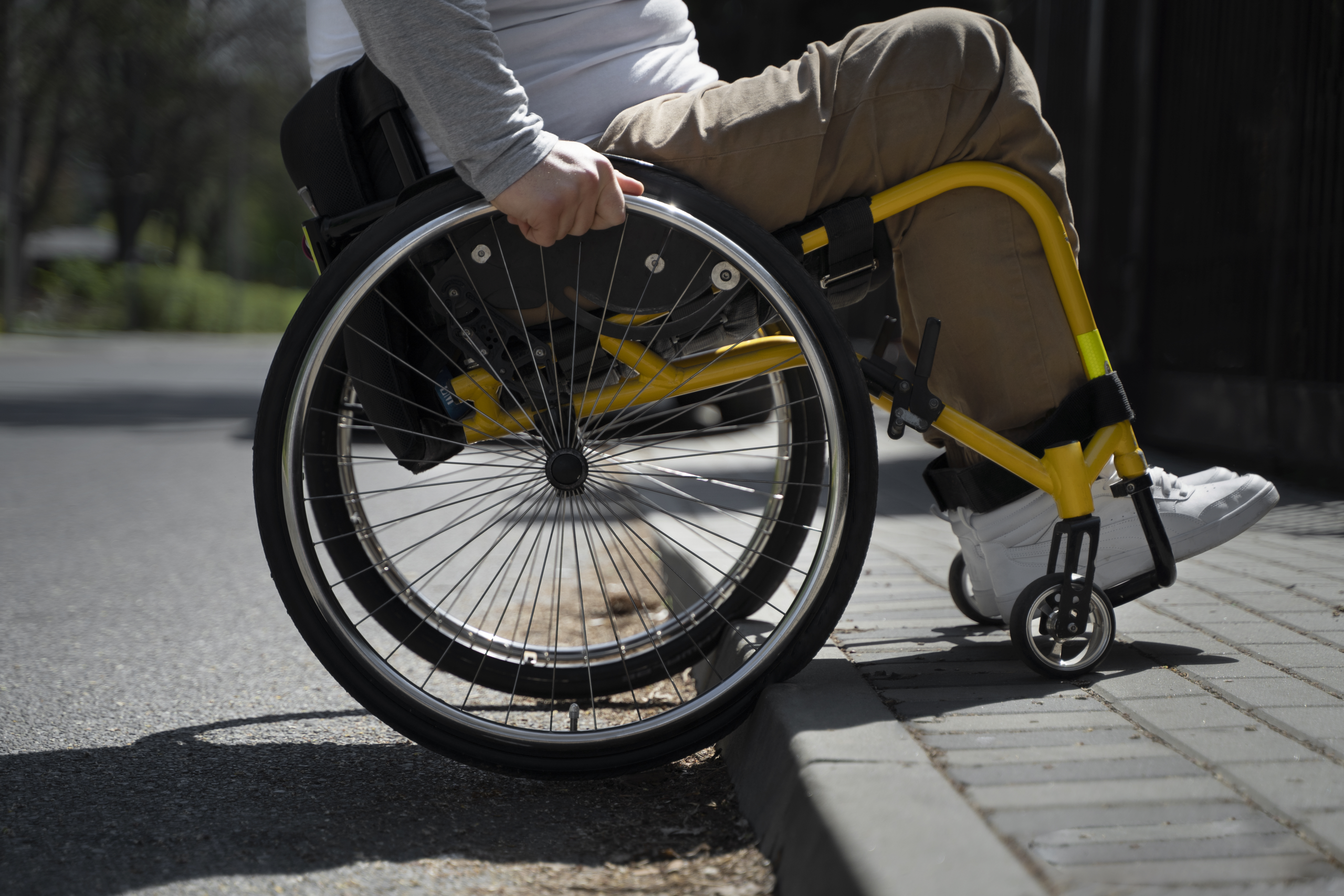Are Walking Frames for Elderly More Practical Than a Wheelchair Option?
Time : Sep 15, 2025 View : 1,520
Mobility aids are handy tools. They help folks with limited movement stay free and make daily tasks simpler. Walking frames for older people and wheelchairs are top picks. Each one fits special needs. Knowing their differences is key to choosing the best one. A person might be recovering from surgery. Or battling a long-term illness. Maybe age just makes moving tricky. The choice between a walking frame and a wheelchair depends on personal health stuff.

Comparing Mobility Aids: Walking Frames vs. Wheelchairs
Picking between walking frames and wheelchairs means checking their build. You also look at their purpose. And how well they work with someone’s moving ability.
Key Differences in Design and Functionality
Walking frames give support for walking. They usually have four legs. Some have rubber tips. Others sport small front wheels to glide forward. Users lean on their legs and arms to move.
Wheelchairs are different. They’re for folks who can’t walk much. Or at all. They come in manual or electric types. Safety and ease are their big wins. They boast cool features. Like a new patent for one-click folding and unfolding. Their sleek look shines. They’re safe and super light. A fancy brake system stops issues. No more tangled cords or crash risks like old brakes had.
Suitability Based on Mobility Levels
Walking frames suit people with some leg strength. They need a bit of help to stay balanced. Wheelchairs work better for those who struggle to walk. Or can’t walk at all. This includes folks with bad joint pain. Or paralysis. Even serious nerve issues.
Indoor vs. Outdoor Use Considerations
Walking frames are handy inside homes where floors are even and distances are short. But they might not work well outside on rough ground. Wheelchairs, especially the electric kind, handle both indoor and outdoor spaces with ease. They come with a four-wheel shock absorption system, making rides smooth and comfy. Plus, they’re eco-friendly and good for health.
Benefits of Walking Frames for Elderly Individuals
Walking frames bring many perks that boost physical wellness and freedom for older folks.
Enhanced Stability and Balance Support
One major plus of walking frames is how they improve steadiness. They lower the chance of falling, which is a big worry for seniors. This builds confidence when moving around the house or elsewhere.
Promoting Physical Activity and Muscle Engagement
Using a walking frame keeps a person active. It works the muscles in the legs, arms, and middle body. Over time, this helps stop muscles from weakening and supports better heart health.
Lightweight and Easy to Transport
Most walking frames are crafted from light stuff like aluminum. This makes them simple to pick up and put in a car or carry upstairs when needed.
Advantages of Using a Wheelchair
Wheelchairs offer key support for people who can’t depend on their legs to get around due to health issues or tiredness.
Comfort and Support for Limited Mobility
Wheelchairs have cozy seating that cuts down on sore spots during long use. They feature a thickened Oxford cloth seat cushion. Even after sitting for hours, there’s no tiredness, ensuring comfort all day long.
Efficient Movement Over Longer Distances
Wheelchairs make covering bigger distances easier without wearing out the body. Electric versions add even more ease by cutting down on the need to push manually, while still letting users stay in control.
They include a dual charging mode lithium battery and a one-key folding frame. This makes loading simple and supports flexible travel, even for long stretches.
Options for Manual vs. Electric Wheelchairs
Manual wheelchairs need arm strength or help from someone else to move. Electric wheelchairs, though, provide powered options with perks like a 250W*2 high-power brushed motor for strong climbing ability. These choices let users pick what suits their strength and needs.
Practical Factors to Consider When Choosing Between the Two
Picking between a walking frame and a wheelchair means thinking about real-life aspects beyond just basic movement needs.
User Strength and Endurance Requirements
Walking frames take more effort to use than wheelchairs. A person needs enough arm power to lift or push the frame while stepping forward. Electric wheelchairs, however, work well for those with less strength. They offer easy controls for movement without much physical work.

Home Environment and Accessibility Features
Tight hallways or stairs can make wheelchair use tricky unless changes like ramps are added. Walking frames usually fit through regular doors. But they might struggle on thick rugs or bumpy floors.
Caregiver Assistance and Safety Concerns
Those using wheelchairs often need help getting in and out of beds or going up steps safely. A key safety tip is to avoid stepping on the foot pedals when getting on or off. Standing on them during use can tip the wheelchair over. Walking frame users might also need someone to watch them if their balance is poor. Still, they often need less hands-on help compared to wheelchair users.
Medical and Lifestyle Considerations in Mobility Aid Selection
Besides how they work, a person’s health and way of life play a huge role in choosing the best mobility aid.
Chronic Conditions That Affect Mobility Choices
Some health issues, like Parkinson’s or multiple sclerosis, can change how folks move. At first, a walking frame might help. But as things get tougher, control over steps weakens. So, a wheelchair may become the better pick.
Post-Surgery or Injury Recovery Needs
After operations, like fixing a hip or mending a broken leg, a walking frame can be a big help. It supports building strength again. Over time, some folks walk on their own. But if full movement stays out of reach, a wheelchair might be needed for the long haul.
Impact on Daily Independence and Quality of Life
Mobility aids should make life easier. Tasks like bathing, cooking, or shopping should feel simple. Even visiting friends should be fun. The right tool boosts freedom. It keeps risks low too. It all depends on a person’s own needs.
Cost, Maintenance, and Long-Term Usability Comparison
Cost is another big thing to think about when deciding if a walking frame or wheelchair is better for the long haul.
Initial Investment vs. Ongoing Maintenance Costs
Walking frames usually cost less at the start compared to wheelchairs. But they might not be enough for conditions that get worse over time. Electric wheelchairs cost more upfront. Yet, they have handy features like a one-key quick folding function and a quick detachable battery box for charging anywhere. These make them more useful over time without needing to replace them often.
Durability and Lifespan of Equipment
Strong materials, like carbon fiber aluminum alloy welding, ensure long-lasting use in Xunyu Medical’s products. Both walking frames and wheelchairs are solid choices, depending on how often they’re used.
Insurance Coverage and Financial Assistance
Many health plans cover part of the cost for needed mobility aids. This includes walking frames for seniors and both manual and electric wheelchairs. Coverage often depends on a doctor’s advice, as seen in guidelines from places like the NHS.
Introducing Xunyu Medical as a Trusted Mobility Aid Supplier
Xunyu Medical is a top name in the field, providing smart solutions that fit a wide range of needs with their broad lineup of products.
Overview of Xunyu Medical’s Product Range: Bedside Handrails, Crutches, Wheelchairs, Bath Chairs, Walking Aids. Their offerings cover everything from simple recovery tools to high-tech powered systems. These are built with user comfort and safety in mind, featuring designs like foldable switches to save space and ergonomic seat plates in models like the XY-D13T.
Their goal shows a deep promise to improve everyday life through easy-to-use designs. These are supported by tough materials made for real-life use, whether at home or on the go.
Summary of Key Insights on Choosing Between Walking Frames and Wheelchairs
In the end, picking between these aids means finding a match between what the tool can do and what a person needs.
-
Walking frames encourage staying active but need some strength to use.
-
Wheelchairs give full support when walking isn’t possible.
-
Talk to health experts before choosing. They look at medical history and personal goals to suggest the right tool, following safety rules from trusted sources like NHS UK.
Making a thoughtful choice ensures lasting freedom without risking safety during daily activities. This applies to moving through home hallways or enjoying outdoor trips with confidence, backed by dependable providers like Xunyu Medical.

FAQs:
Q1: Is it better to start with a walking frame before transitioning to a wheelchair?
A: Yes, often starting with a walking frame helps with slow recovery while keeping a person active. But if health gets worse, like with growing nerve problems, moving to a wheelchair may be needed based on a doctor’s input.
Q2: Can electric wheelchairs be folded easily for transport?
A: For sure! A one-key quick folding function lets electric models from Xunyu Medical fold up fast. This is perfect for car trips or storing them away.
Q3: Are there specific insurance programs that cover mobility aids?
A: Many insurance plans, including public health systems, help pay for needed devices like walkers or wheelchairs when a doctor confirms the need. Always check local rules first with your doctor or care helper.


